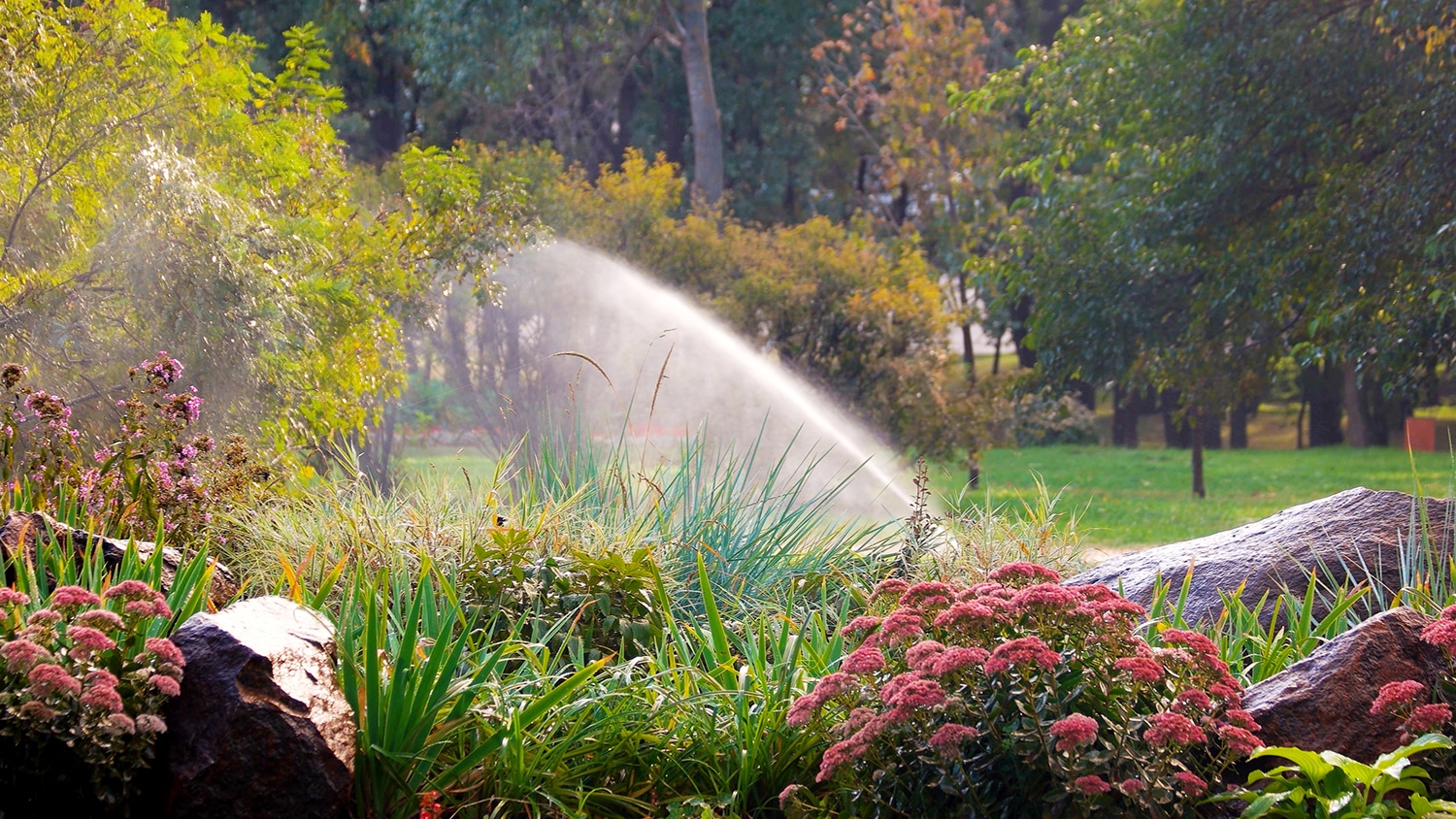LANDSCAPE DESIGN AND PLANT SELECTION
First, some things to think about. Did you know, for example, that a typical American single-family home uses about 10,000 gallons of water a year for lawn irrigation? In the summer months, that demand can be as much as three times higher. The fact is that excessive irrigation not only increases water costs, but it drains our water supply sources, adds to pollution with runoff of fertilizers and other chemicals, and demands a significant amount of our time and resources for maintenance. Americans spend more than $750 million each year on residential turf grass…and another $25 billion for mowers, hoses, clippers, and gardening tools. The amount of lawn fertilizers — chemicals — applied by homeowners on these lawns and landscapes is nearly 10 times the amount of pesticides (per acres of turf) than farmers use on crops!
Let’s start with design. There are lots of important considerations: the area available for landscaping, soil conditions, the general climate and annual rainfall patterns, where the sun hits — and doesn’t reach — during the day, plant selection and water requirements, and the basic use for the area and overall aesthetic preferences. A residential yard with a water-wise design can be just as attractive, lush and colorful as what is thought of as a ‘traditional’ landscaped area. Think outside the box. The largest water savings to be achieved through water-wise landscapes are accomplished by reducing turf areas — especially if the grass variety is especially thirsty, like St. Augustine. Studies of residential properties that have utilized water-wise techniques suggest that actual water savings of 20 – 50 percent can be achieved. Redesigning a home’s lawn and landscape areas will certainly have some initial costs — how high depends on the budget — but the long-term benefits and potential water savings will be worth it.
The concept of “Xeriscape” landscape designs is often misunderstood. These are NOT just recreations of desert environments using rocks and cactus; these principles utilize native and adaptive plants from the area in which they are created. Using native and low-water-use plants and grasses is the key to controlling irrigation demand. If you’re in doubt, experts say that “native plants” have three distinguishing characteristics:
- It ‘arrived’ by means of water, wind, the fur of a migrating animal, or by bird or animal droppings;
- The plant evolved over a long period of time and now thrives; and 3. It has not been ‘tampered with’ by humans. It is the place of origin that determines whether or not it is native to the region. Selecting drought tolerant or drought-resistant plants is another key strategy to not only reduce the need for supplemental water but to increase their incidence of survival, as well.
Soil quality influences how well plants will survive or thrive, so the first step should be to have the soil analyzed. Soil tests are usually inexpensive and can be performed by cooperative extension offices and some plant nurseries or local farmers markets. The basic test will show the pH level and identify what amendments are needed to increase the nutrients.
Select the plants after the soil test is complete to know which are best suited for the soil you have to work with.
The use of mulch will help save water by reducing evaporation, cooling the soil, and controlling weeds. Using organic mulch (grass clippings, shredded leaves, wood chips, bark mulches, and pine ‘straw’) and compost in flower beds can significantly reduce the amount of water the plants will need to thrive.
IRRIGATION
Poor irrigation scheduling — watering too often and for too long — is the number one source of water waste associated with irrigation, followed by poor system design, inefficient equipment, and poor maintenance. Apply water only when and where it is needed. Just because you have a sprinkler system, don’t assume that you are using water efficiently. Even the most elaborate sprinkler system can waste water because owners either don’t know how or don’t bother to set the frequency and timing controls after the initial settings. Experts suggest that, for proper efficiency, the entire irrigation system controllers be reprogrammed at least monthly to respond to changing rainfall and temperatures. The entire system should be checked for leaks periodically, too.
Installing a device that shuts off an automatic irrigation system when has rained or is raining can save up to 10 percent of water used outdoors. If you don’t have one, get one. (See articles in this issue.) Find and repair any broken heads, seals or pipes in your irrigation system. Watch the entire cycle to make sure that the water is going where it is needed and that all areas you intend to water are getting wet. Make control modifications as appropriate.
If serious water savings interest you, consider replacing a conventional sprinkler system for non-turf areas with a drip-irrigation system — the savings can be as much as 75 percent. The price to install can range from a do-it-yourself project ($50-$100) to a custom installation costing up to $1.50 per square foot.
Remember, YOU are the most important water conservation ‘tool’ at your house. Make using water more efficiently a priority!





